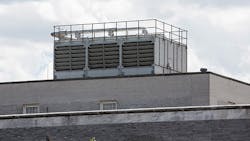Legionellosis Prediction a Year Later: Not What I Expected
In late 2015, Scott Arnold, the executive editor of HPAC Engineering, invited me to contribute to “Trends, Issues, and Best Practices in HVACR and Buildings 2016” (known in print as “HVACR 2016: State of the Industry, State of the Art”), a collection of essays in which “a cross-section of HVACR and buildings professionals offer their views on industry trends and issues or provide tips and best practices to help readers get the most out of their systems” in the coming year. In my essay, I opine that interest in legionellosis is trending and recount the outbreak of Legionnaires’ disease that sickened more than 120 people, 12 of them fatally, in New York City during the summer of 2015. I also briefly discuss ANSI/ASHRAE Standard 188-2015, Legionellosis: Risk Management for Building Water Systems, and point out portions of the standard already have been adopted as law in New York. I then go on to predict that, in 2016, new procedures and technologies (perhaps even some new businesses) will emerge in response to this serious problem.
I was wrong. Although manufacturers of biocides and ozone water-disinfection technologies continued to advance their products in 2016, there was little evidence of major technological breakthroughs to combat legionellosis. The most notable exception of which I’m aware was the introduction in September of what Delta Cooling Towers describes as the world’s first antimicrobial cooling tower. Both the plastic shell and the cooling-tower fill are constructed of an antimicrobial resin that, according to testing performed by the Special Pathogens Laboratory (self-described “Legionella Experts”), is effective against Legionella growth.
Unfortunately, the incidence of legionellosis infections has increased significantly over the past year. Since the outbreak in Flint, Mich., in November 2015, arguably caused by problems associated with a change in the municipal water system, there have been at least 308 confirmed cases worldwide, 57 of them in the United States, resulting in at least 11 deaths. According to the National Notifiable Diseases Surveillance System, the incidence of legionellosis in the United States has increased nearly 400 percent since 2000.
In June 2016, the Centers for Disease Control and Prevention (CDC) released a toolkit to help users develop and implement a water-management program to reduce the risk of growing and spreading Legionella. However, like ANSI/ASHRAE Standard 188, this document only provides guidance in the process of developing a program; it does not provide a specific, detailed plan. Another noteworthy resource is http://legionella.org/. The website was founded by two infectious-disease practitioners, Victor L. Yu, MD, and Janet E. Stout, PhD, who have been extensively involved in hospital-acquired Legionnaires’ disease for more than 30 years. It provides educational resources for patients, clinicians, and water-treatment professionals. Hopefully, 2017 will see more progress in the fight against this serious, often fatal, disease that continues to plague our industry.
Note that my prognostication for 2017 concerns Property Assessed Clean Energy (PACE). I’m confident it will be closer to the mark than last year’s.
Best wishes to all of you for a healthy and happy New Year!
About the Author
Larry Clark
A member of HPAC Engineering’s Editorial Advisory Board, Lawrence (Larry) Clark, QCxP, GGP, LEED AP+, is principal of Sustainable Performance Solutions LLC, a South Florida-based engineering firm focused on energy and sustainability consulting. He has more than two dozen published articles on HVAC- and energy-related topics to his credit and frequently lectures on green-building best practices, central-energy-plant optimization, and demand-controlled ventilation.
